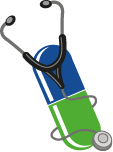ECDC patient story: Lill-Karin

Lill-Karin, Norway, caught bacteria resistant to many antibiotics after an accident and a hospitay stay while on holiday abroad. The strain of bacteria was so resistant that there was only one antibiotic available that can be used to treat it. She spent a long time in and out of hospitals to get rid of the infection.
My name is Lill-Karin; I am a 66 year-old retired school teacher, with three grown-up children and five grandchildren. I have lived alone since my husband died, and I spend my time reading, doing needlework, writing poems and travelling.
I have been to India several times but had never visited Kerala, so in 2010 I planned a trip and arranged to stay with a local family. Things went wrong very quickly. My host picked me up from the airport but before I could see the city, his car collided with a lorry.
I had a badly broken leg and was rushed to hospital lying on the floor of an ambulance. After arriving at the hospital, I spent two days on a plastic bed in a large room, surrounded by sick people. I was given a bowl of water once a day, but having a broken leg meant I couldn’t move to wash myself or change my clothes, so I just lay there in the heat.
Eventually, I was moved to a private room and had a hip replacement operation. In India, your family is expected to look after you in hospital, so I didn’t see much of the doctors or nurses. It was a very lonely few weeks with only my host for company, but eventually I was allowed to come home.
Back in Norway, I had to go straight back into hospital. I was kept alone in a special room and anyone who came to see me had to wear protective clothing. The doctors found that I had an antibiotic-resistant bacterium in my urine, caused by a urinary catheter that I had had fitted during the surgery in India. I didn’t feel any symptoms of the infection, but it was a very difficult time.
My family had a new baby so were scared to visit me, in case they caught the infection. I also missed family weddings and baptisms. Being alone at that time was a terrible blow, I felt very low and extremely isolated. I was also worried that the wound from my surgery would become infected as it still had not healed. There were times when I was not sure if I would survive.
Thankfully, I am now fully recovered and free of the infection, but for a time I was very afraid of catching a cold or something worse. From my time in hospital I learnt the importance of strict hygiene and using disinfectant handwash and home cleaners to keep bugs at bay. It was a horrible experience but it hasn’t stopped me wanting to travel; I am already planning my next trip to Kerala. This time I’m hoping to see the country, not just the hospital.
Commentary: case notes
While in India, Lill-Karin underwent orthopaedic surgery and prophylactic antibiotic treatment with linezolid. She was admitted to hospital in Norway with a variant of the bacterium Klebsiella pneumoniae in her urine that was resistant to multiple antibiotics. This bacterium was thought to have colonized her urine from a catheter fitted during surgery in India.
The bacterium was susceptible only to one antibiotic, colistin. It showed resistance to all the following antibiotics: all beta-lactams (penicillins and cephalosporins, the carbapenems and aztreonam), the aminoglycosides, the fluoroquinolones (e.g. ciprofloxacin), trimethoprim/sulfamethoxazole and tigecycline.
The K. pneumoniae isolate was found to produce the enzyme carbapenemase. Molecular analysis showed that the isolate contained a gene responsible for producing the New Delhi metallo-beta-lactamase (NDM-1), a novel carbapenemase. This genetic element has been found in many bacteria and has spread globally, causing bacteria that carry the gene to be resistant to many antibiotics. This leaves only a few, or no antibiotics available for treatment. In this patient’s case, her bacterium was only sensitive to colistin, an antibiotic which has to be given intravenously and can be toxic.
There has been a rise in the rates of such highly resistant bacteria throughout the world. These bacteria, which have the potential to travel across country borders, are often carried by patients who are transferred between healthcare systems. It is important for physicians to be on the lookout for cases of patients carrying bacteria with such antibiotic resistance. Although this type of resistance is rare in Scandinavia, many other cases seen in Europe have been linked to hospitalisation abroad.

